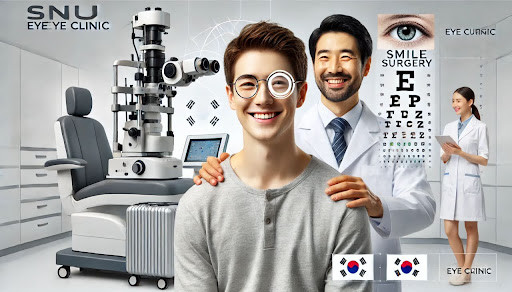Ophthalmology has always been at the forefront of medical innovation, with eye surgery undergoing dramatic transformations over the past few decades. From the introduction of LASIK in the 1990s to the use of femtosecond lasers and robotic assistance today, the field continues to evolve rapidly. As more people snu eye clinic seek surgical solutions for vision correction, cataract removal, and retinal disorders, ophthalmology is embracing technologies that offer better precision, reduced recovery times, and improved outcomes. These innovations not only enhance patient care but also redefine what is possible in vision restoration and preservation.

One of the most exciting developments in eye surgery is the growing use of femtosecond laser technology. Unlike traditional surgical tools, femtosecond lasers allow for extremely precise, bladeless incisions in procedures like cataract surgery and LASIK. The laser’s ultrashort pulses minimize damage to surrounding tissues, leading to faster healing and less inflammation. In cataract surgery, femtosecond lasers assist in softening the lens for easier removal and enable surgeons to create perfectly shaped incisions, improving the accuracy of intraocular lens (IOL) placement. This results in clearer postoperative vision and reduces complications, especially in complex cases.
Another groundbreaking trend is the integration of artificial intelligence (AI) and machine learning in ophthalmology. AI is being used to enhance diagnostic accuracy, guide surgical planning, and even assist during procedures. For example, advanced imaging systems powered by AI can detect retinal diseases like diabetic retinopathy or age-related macular degeneration long before symptoms arise. During surgery, AI algorithms analyze real-time data to help surgeons make precise decisions, particularly in retina and glaucoma procedures. Robotic-assisted systems, similar to those used in other surgical fields, are also making their way into ophthalmic operating rooms, allowing for micrometer-level precision in delicate eye operations.
Gene therapy and regenerative medicine are also transforming the future of eye care. For inherited retinal diseases such as Leber congenital amaurosis and retinitis pigmentosa, gene therapy offers a potential cure rather than just symptomatic treatment. By delivering corrective genes directly into the retina, scientists have been able to restore partial vision in patients who were previously considered blind. Additionally, research into stem cell therapy shows promise for regenerating damaged retinal cells or optic nerve fibers. While still in the experimental stage, these advancements could one day reverse vision loss caused by degenerative eye conditions, offering hope to millions.
Customized and patient-specific approaches are becoming the new standard in ophthalmology. Wavefront-guided LASIK, for instance, uses detailed maps of the eye’s optical system to tailor the laser treatment uniquely to each patient’s eye. Similarly, IOLs are now available in multifocal, toric, and extended depth-of-focus designs, allowing cataract patients to achieve clearer vision at multiple distances without the need for glasses. These personalized solutions are improving patient satisfaction and pushing the boundaries of what eye surgery can achieve. As imaging and diagnostic tools become more refined, the ability to create highly individualized treatment plans will only continue to expand.
Looking ahead, the future of ophthalmology is likely to be driven by further miniaturization and integration of technology. Nanotechnology could enable targeted drug delivery directly into eye tissues, reducing the need for frequent injections in diseases like macular degeneration. Wearable devices that monitor intraocular pressure could revolutionize glaucoma management by providing real-time data. Tele-ophthalmology, already gaining traction due to its convenience, will play a larger role in pre- and post-surgical care, making eye health services more accessible, especially in remote regions. All these advancements promise not only to preserve sight but also to enhance the quality of life for millions around the globe.
In conclusion, innovations in eye surgery are setting the stage for a new era in ophthalmology—one marked by precision, personalization, and prevention. With breakthroughs in laser technology, AI integration, gene therapy, and personalized treatment strategies, the boundaries of eye care are expanding rapidly. As these technologies continue to mature, they will transform the patient experience, making procedures safer, faster, and more effective. The future of ophthalmology is not only about restoring vision but also about redefining what it means to see clearly in a rapidly changing world.

